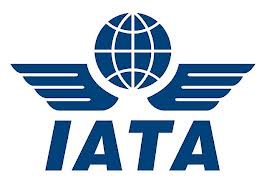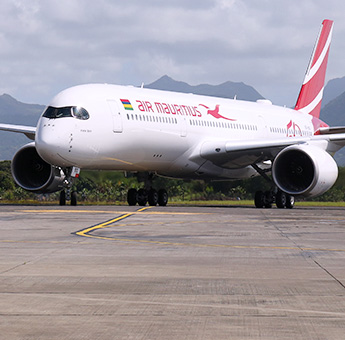Devon Air Ambulance
Devon Air Ambulance is continuing air tasks today after the effective usage of a few new flight arrangements, which implies we would now be able to give assurance to our patients and aircrew against Coronavirus. This is extraordinary news for Devon and mirrors a colossal measure of work that has been done by our Helicopter Services and Patient Services groups in the course of recent weeks. Our capacity to restart air tasks is a consequence of deliberate endeavors by the avionics business and controllers and it’s been moving to see the various associations arrange to work together, enhance and drive the improvement of economical arrangements.

As discussed in our recent Blogs, the Coronavirus pandemic has created various challenges for Air Ambulance services around the UK to operate their aircraft whilst safeguarding their patients and aircrew. Devon Air Ambulance has responded to these challenges by working with our partners on three new areas of development: a separation screen in the aircraft to partition the pilot from the patient/paramedic area, a throat microphone which can be worn in conjunction with protective face masks and a bracket which will enable a full-face visor to be fitted to an aviation safety helmet.
Each of these new developments has involved a distinct package of work starting with prototype design and development, first-build and initial trials, to final production with approval from EU and UK aviation authorities. Lastly, over the past week we have been carrying out final in-flight testing and simulation as part our safety and risk assessment processes. The timeframe for this whole process, which under normal circumstances might take many months, has been transformed into only a few weeks and these new measures are now ready for the phased re-introduction of our flight operations. This progress is a huge testament to all those organisations working to tackle the impact of Coronavirus on the Air Ambulance sector.
A new separation screen has now been installed between the front and rear sections of the aircraft, which means we can partition-off the pilot cockpit from the patient/paramedic area. The new screen is designed to fit securely around the inside of the aircraft frame, creating a sealed area which will reduce the risk of transmitting Coronavirus from the patient treatment area to the cockpit.
From today, our Exeter-based aircraft will once again be taking to the skies over Devon and responding to patients from 7am until dusk every day. As a first step, we will be deploying to patients by air, treating them on scene and then assisting local crews to convey patients to hospital by land ambulance (in the same way that most Air Ambulances are currently operating).
Over the coming days and weeks we will progressively increase our scope of operations as we carry out a phased reintroduction of our service. The reason behind this is twofold. Firstly, we want to make sure that all of our aircrew have had the opportunity to carry out ‘real time’ training with the new separation screen in place whilst wearing the minimum recommended Level 2 Personal Protective Equipment (PPE). Secondly, we want to ensure that once we press ahead with reintroducing each new phase, we will do so having fully tested and evaluated our practice. The risk otherwise is that we might overlook a crucial part of this new way of working and have to stop flying whilst we have to reassess and reevaluate our approach.
Whilst the exact timing of the reinstatement of our service is unclear, we do know that one of the key stages in this process will be the introduction of conveying potential Coronavirus patients by aircraft who may require medical interventions known as Aerosol Generating Procedures (AGPs) which, because of the techniques involved, place our teams at higher risk of contracting Coronavirus. When we reach this stage, our teams will need to wear Level 3 PPE in flight and that’s where the newly designed throat microphone can be utilised. This new mic will mean our aircrew can wear the recommended FFP3 respirator masks and still communicate effectively with one another and externally with the Air Traffic Control or Helicopter Emergency Medical Services Dispatch team for example.
Once we reach the stage where we are able to carry out AGPs safely in flight (for example CPR or ventilating a patient who has stopped breathing) the crew will also now be able to wear full-face visors fitted to their aviation safety helmets. As another requirement of Level 3 PPE, this kit will add to the suite of improvements we have undertaken to improve the working environment for our people. Lastly, we also know that all of this live training will need to be rolled out during both daylight hours and in darkness as we look to get back to operating the aircraft from 7am until 2am every day.
During the phased reintroduction of air operations, our paramedics will still be responding to patients by Critical Care car, with at least one car operational throughout the day in addition to the aircraft. As the Exeter-based aircraft goes offline at dusk, the crew will move to a Critical Care car ensuring we can still deliver our full critical care capabilities until 2am every day.
Our crews will also be making the most of their time by using the Eaglescott aircraft to carry out ongoing training and simulation to ensure our teams are well prepared for what are undoubtedly a very different set of challenges when conducting air operations during Coronavirus.
We would like to extend a huge thank you to Babcock Marine at Plymouth Devonport Dockyard, Babcock Mission Critical Services Onshore in Gloucester, Headset Services Limited and Airbus Helicopters UK for all their support in getting our (and a number of other Air Ambulance operator’s) EC135 helicopters equipped for the times ahead.
Please check back to our Blogs and News to get our latest updates and progress towards resuming full air operations.



